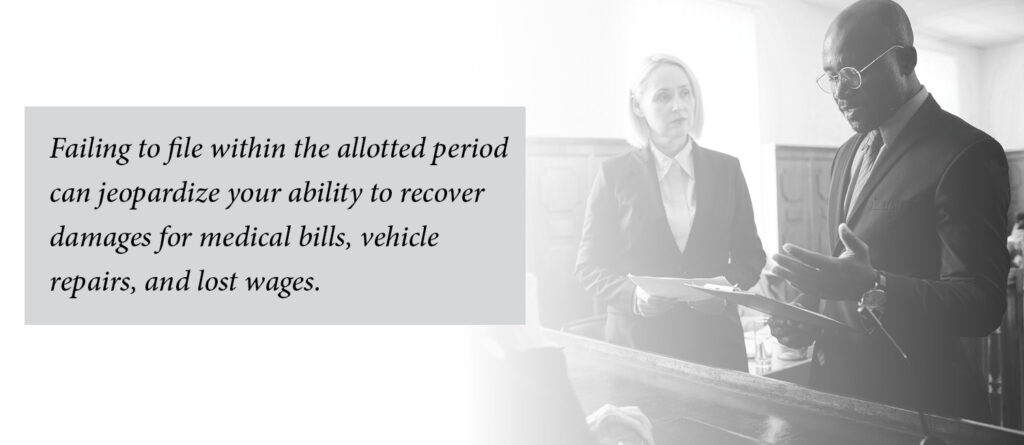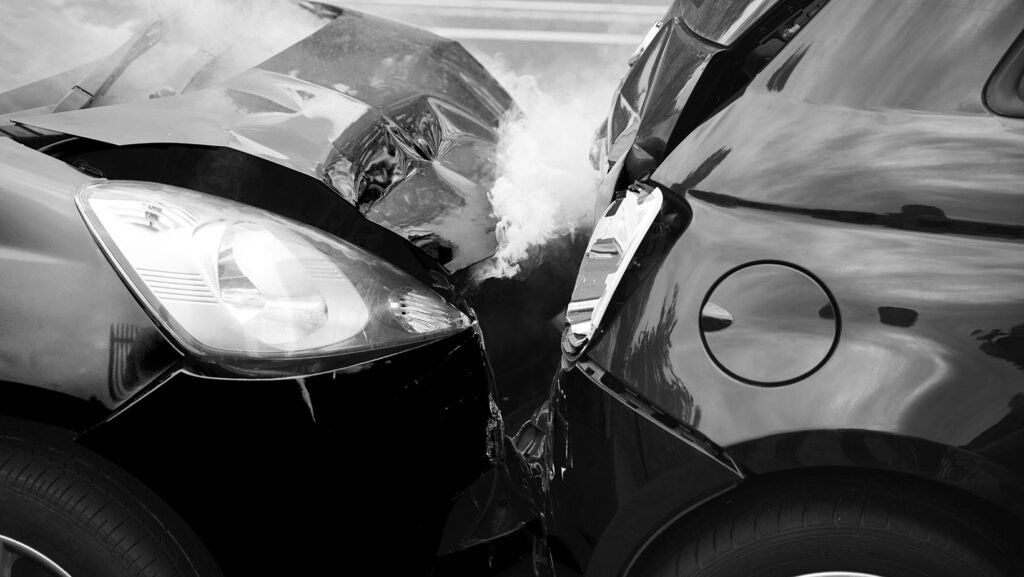Rear-end collisions are among the most common car accidents, and responsibility usually falls on the trailing driver. However, determining fault isn’t always straightforward, as there are exceptions to this general rule. Understanding these exceptions is crucial, especially since injuries like whiplash can have lasting impacts. Knowing who is at fault helps secure a fair settlement and can ensure your needs are taken care of after an accident.
General Rule of Rear-End Accident Liability
In most rear-end collisions, the trailing driver is assumed to be at fault. This general rule stems from the expectation that every driver should keep a safe following distance and be prepared to stop if the vehicle in front slows down or stops suddenly. Legally, the trailing driver has a clear view of the lead vehicle and road conditions, making it their responsibility to react appropriately to avoid a collision. Factors like distracted driving, tailgating, or driving too fast for conditions often contribute to trailing driver fault.
The rationale for this rule is that, in normal circumstances, a rear-end accident could be prevented if the trailing driver was attentive and maintained a safe distance. Courts and insurance adjusters frequently uphold this presumption, as it’s understood that driving defensively includes accounting for potential slowdowns or stops from the lead vehicle.
Exceptions to the Rule of Trailing Driver Fault
While the trailing driver is generally at fault in rear-end accidents, there are exceptions where the lead driver may share or bear full responsibility. One common exception occurs when the lead vehicle’s brake lights aren’t functioning. Without visible brake lights, the trailing driver may not receive adequate warning to slow down, making it harder to avoid a collision. In such cases, the lead driver may be considered partially at fault.
Another exception involves mechanical issues. If a car experiences a breakdown and fails to pull off the road safely, leaving it in the lane, the lead driver could be held liable for creating an unsafe road hazard. Similarly, if the lead driver stops abruptly for no valid reason—especially in high-speed zones—this action can lead to shared fault. The sudden stop may be deemed unreasonable or dangerous, especially since sudden stops are likely to result in one or multiple drivers receiving a whiplash injury.
Both drivers may be found partially responsible in certain situations, especially if both contributed to unsafe conditions. Each case depends on specific circumstances, but exceptions like these sometimes occur.
Responsibilities During Bad Weather
In poor weather conditions, such as rain, fog, or snow, drivers have an added responsibility to maintain a safe distance and drive cautiously. While slippery roads and reduced visibility make driving more challenging, these conditions do not exclude trailing drivers from liability if they collide with the vehicle ahead.
The legal expectation is that all drivers, regardless of the weather, should be aware of changing conditions and adjust their driving accordingly. This includes slowing down, increasing following distance, and being extra vigilant. If a trailing driver fails to do this and rear-ends another vehicle, they are typically still at fault, as they did not exercise the necessary caution.
For safety and legal protection, drivers should always keep extra distance in bad weather. Adapting to current road conditions can reduce the likelihood of accidents and potential liability, even in unpredictable weather situations.

Importance of Gathering Evidence After a Rear-End Accident
After a rear-end accident, gathering evidence is essential, especially since a whiplash injury may not present symptoms immediately. Even if you feel fine, documenting the accident scene can protect your rights and strengthen future claims.
Start by taking photos of the accident scene, capturing vehicle positions, road conditions, and any visible damage to both cars. This visual record is invaluable in supporting your case, especially if there’s any dispute over fault. Additionally, if there are witnesses, collect their contact information and statements to reinforce your version of events.
Dashcam or surveillance footage, if available, can also be critical, providing a clear view of the moments leading up to the accident. Such evidence is particularly useful in cases involving sudden stops, mechanical failures, or adverse weather conditions.
Thorough documentation can be essential for insurance claims and legal action, especially if you need to show that the lead driver may share responsibility. Collecting evidence promptly ensures you have the information needed to support your claim effectively.
Statute of Limitations for Rear-End Accident Claims
Different states have specific deadlines, known as statutes of limitations, for filing a claim after a rear-end accident. Knowing these timelines is crucial, as missing the deadline generally means losing the right to pursue compensation, regardless of the injury’s severity or the other driver’s fault. For example, in New Mexico, accident victims have up to three years to file a claim. In contrast, Texas and Illinois impose a two-year limit for filing rear-end accident claims.
Failing to file within the allotted period can jeopardize your ability to recover damages for medical bills, vehicle repairs, and lost wages. To protect your claim, it’s wise to gather evidence early, seek medical attention immediately after the accident, and consult a legal professional to ensure all documentation is in order. Being aware of these deadlines helps ensure you don’t lose the opportunity to pursue fair compensation as part of a rear-end accident settlement.
How Kane Helps with Rear-End Accident Settlements
When it comes to getting the best possible rear-end accident settlement, expertise matters. Kane Personal Injury has helped countless people just like you settle their accident cases and get the compensation they deserve. If you or a loved one has been in an accident and needs someone to advocate for you or want to learn more about your next steps, contact us today for a free, no-obligation consultation.
